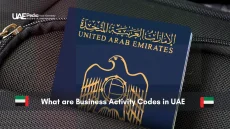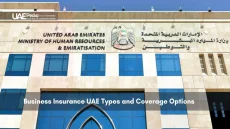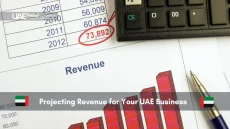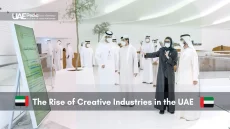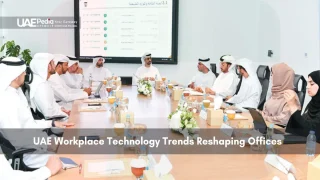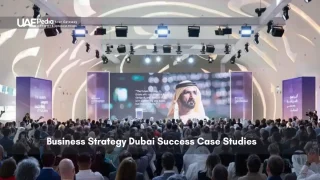What if aligning your team’s goals could transform your company’s trajectory as dramatically as Dubai’s skyline? Recent Gulf Business reports reveal organizations with structured feedback systems achieve 40% higher productivity than those relying on annual reviews alone.
Leading companies in the Emirates approach goal-setting like navigating the dunes—precise, adaptable, and focused on shared outcomes. – precise, adaptable, and focused on collective progress. Take Flydubai improved cabin crew training efficiency by 28% within six months after adopting real-time skills tracking. within six months. Oman Air’s mobile-friendly feedback platform increased cross-department collaboration scores by 34%.
This approach goes beyond spreadsheets. It’s about creating clear pathways where individual growth fuels organizational ambitions. When done right, teams don’t just meet targets – they anticipate market shifts and innovate solutions.
- Goal alignment boosts productivity by 18-40% across Middle Eastern sectors
- Continuous feedback reduces talent turnover by 22% in service industries
- 87% of UAE professionals want more frequent career development conversations
Why Aligning Performance Management with Strategy Drives Results
Consider this: teams that sync personal milestones with company vision see engagement rates hit 73%—12% higher than industry averages. A Dubai-based HR director puts it simply: “When team members see their fingerprints on organizational maps, they don’t just work—they build legacies.”
Linking Personal Growth to Business Goals
Forward-thinking Emirates firms treat business-employee synergy like date palm cultivation—nurture roots, and the fruits follow. Take logistics giant Aramex: after linking warehouse staff targets to customer satisfaction metrics, error rates dropped 19% while promotion-ready employees doubled.
Navigating Rapid Growth with Agile Goal Alignment
Clear objectives act like desert stars for rapidly scaling teams—navigation points that adapt as dunes shift. Startups here report 31% faster decision-making when using cascaded goal frameworks. One tech founder shares: “We break annual targets into weekly ‘sprints’—celebrate small wins, adjust course faster.”
- 83% of professionals feel motivated when understanding their role’s strategic impact
- Companies with aligned priorities retain top talent 2.1x longer
- Real-time progress tracking boosts goal achievement rates by 44%
Clarifying Objectives for Maximum Team Impact
Imagine steering a dune buggy without a GPS in the Rub’ al Khali—you might move fast, but are you heading anywhere meaningful? That’s why leading Emirates teams map their routes with precision. Clear targets act like digital waypoints, turning vague “work harder” demands into actionable paths.
Making Goals Quantifiable and Actionable
Top-performing firms approach goal-setting like marketplace deals—specific, data-backed, and mutually beneficial, and mutually beneficial. A Dubai logistics firm slashed delivery delays by 37% using OKRs (Objectives and Key Results). Each driver’s daily routes now connect to regional sales targets. “When team members see how their GPS coordinates feed the bigger map, they become navigators, not passengers,” shares their operations head.
Here’s what works:
- Start big: Align team benchmarks with UAE’s national development strategies
- Chunk down: Break annual goals into weekly “checkpoint” metrics
- Stay fluid: Quarterly recalibration sessions adapt to market sandstorms
One tech startup’s secret? Color-coded dashboards showing real-time progress. Green for “on track,” amber for “needs course correction.” Employees earn desert-themed badges for hitting milestones—a playful twist that boosted target completion by 41% last year.
Building a Culture of Real-Time Feedback
What if your team’s communication flowed as smoothly as Dubai Metro’s rush hour operations? Forward-thinking businesses here treat feedback like souk negotiations – constant, lively, and essential for growth. A recent case study shows companies using real-time input systems resolve issues 3x faster than those stuck in quarterly review cycles.
Embedding Instant Feedback in Daily Workflows
Imagine project updates arriving like WhatsApp messages – instant, actionable, and threaded through daily workflows. One Abu Dhabi tech firm replaced monthly reports with Slack-based “pulse checks,” cutting miscommunication errors by 52%. Their secret? Frequent, brief feedback outperforms infrequent reviews.
Three steps to try:
- Use mobile-friendly tools that mirror social media interfaces
- Train managers to give “micro-feedback” during casual check-ins
- Celebrate course corrections as publicly as major wins
Capturing Multi-Directional Feedback for Growth
Top-performing teams gather perspectives like Bedouin scouts – every direction matters. A Sharjah logistics company’s 360° system revealed hidden leadership potential in 23% of frontline staff. “We discovered star problem-solvers who’d never spoken up in hierarchical meetings,” shares their HR director.
| Aspect | Annual Reviews | Continuous Feedback |
|---|---|---|
| Frequency | Once/year | Real-time |
| Engagement | 38% participation | 82% participation |
| Course Correction | 6-month delay | 48-hour adjustment |
Start small: implement peer recognition programs before full 360° reviews. Pair junior team members with executives for reverse mentoring. As effective feedback strategies show, the best systems feel less like corporate mandates and more like natural conversations.
Organisations have widely adopted 360‑degree feedback to identify leadership potential and enhance self-awareness—90% of Fortune 500 firms use it at mid-to-senior levels Ref.: “Is 360‑Degree Feedback Really Effective for Leadership Development?” (2025). Niagara Institute.” [!]
Replacing Annual Reviews with Agile Evaluations
Picture a desert caravan adjusting its route daily—not yearly—to find fresh oases. That’s how leading Emirates teams now approach evaluations. Annual reviews? They’re like trying to navigate sandstorms with last season’s maps. DEWA’s shift to quarterly check-ins boosted team productivity by 35%, while HSBC Middle East’s mobile-friendly progress trackers cut promotion timelines by 42%.
Dewa’s shift to quarterly operational performance summaries yielded a 2.83% increase in clean energy output and record energy production—an example of agile review cycles driving measurable efficiency gains Ref.: “Dubai Electricity and Water Authority PJSC announces record quarterly performance” (2025). DEWA.” [!]
Traditional performance reviews struggle to keep pace with today’s agile business environment. Imagine waiting 12 months to adjust a sales strategy while competitors pivot weekly. One Dubai fintech manager put it bluntly: “Yearly reviews measure yesterday’s problems with tomorrow’s tools.”
Agile processes thrive through:
- Biweekly “coffee chat” check-ins replacing formal assessments
- Skill-building targets updated like app versions (v1.2, v1.3)
- Progress dashboards visible to entire teams, fostering peer support
| Aspect | Annual Reviews | Agile Systems |
|---|---|---|
| Feedback Speed | 6-12 months | 48 hours |
| Course Corrections | 23% implemented | 89% implemented |
| Employee Satisfaction | 41% | 78% |
Start small: try “focus sprints” where teams set 3-week goals. Celebrate quick wins with team shoutouts. As one Sharjah logistics leader shared: “We treat evaluations like souk traders—negotiate, adapt, but always keep moving forward.”
The shift away from annual reviews is widespread—use of annual systems dropped from 82% in 2016 to 54% by 2019—yet many organisations still face cultural inertia when adopting continuous feedback models Ref.: “Performance Management Statistics” (2025). ThriveSparrow.” [!]
Using HR Tech to Enhance Review Accuracy and Impact
What if performance reviews could flow as smoothly as gahwa poured from a traditional dallah? Forward-thinking organizations now brew insights using digital tools sharper than Bedouin star navigation.
Integrating AI-Driven Tools
Modern HR suites act like souk merchants—constantly negotiating between data streams and human potential. Flydubai’s AI chatbot analyzes crew feedback in real time, flagging skill gaps before they impact service quality. Oman Air’s sentiment analysis tool scans 12,000 monthly customer interactions to personalize training plans.
Three game-changing trends:
- Predictive analytics forecasting promotion readiness 6-9 months in advance
- Mobile-first platforms delivering bite-sized growth milestones
- VR simulations testing leadership skills in hyper-realistic scenarios
“Our AI doesn’t replace managers – it gives them x-ray vision into team dynamics,”
These tools transform engagement from abstract concept to measurable rhythm. Real-time dashboards show progress like desert mile markers, while automated nudge messages keep improvement efforts on track. When implemented thoughtfully, software becomes the falconer’s glove – guiding potential without restricting flight.
Performance management in the UAE
Imagine your team’s progress updating as smoothly as a live Dubai Fountain show—every leap synchronized, every adjustment visible in real time. This is the power cloud platforms bring to workforce analytics. PeopleStrong’s regional data shows that 68% of Emirati organizations now prefer digital dashboards over paper trails for tracking growth.
Why Cloud Tools Transform Decision-Making
Forward-thinking companies treat data like souk merchants handle spices—constantly refreshed and blended for maximum impact. A Sharjah logistics firm slashed reporting errors by 31% after switching to cloud tracking. Their HR director notes: “Now we spot skill gaps faster than falcons spot desert hares.”
Three key advantages emerge:
- Real-time goal alignment across departments
- Automated progress snapshots for fair evaluations
- Mobile access to development plans from any dune or downtown office
| Aspect | Traditional Systems | Cloud Platforms |
|---|---|---|
| Data Accessibility | 43% teams | 89% teams |
| Update Frequency | Quarterly | Live |
| Strategic Alignment | Manual | Auto-synced |
Take a Dubai retail group’s story. Their cloud-based system reduced monthly review prep from 14 hours to 90 minutes. Managers now spend saved time coaching staff, resulting in 22% higher customer satisfaction scores.
As PeopleStrong’s Gulf Region Head explains: “These tools turn scattered feedback into actionable roadmaps. Teams don’t just follow strategies—they help reshape them through data.” The best systems feel less like corporate software and more like trusted camel guides—steadily moving organizations toward their oasis goals.
Applying Analytics to Boost Performance and Retention
What if your team’s growth charts mirrored the precision of Palm Jumeirah’s engineering? Modern workplaces now treat data like desert stars—constant guides revealing hidden paths to improvement. A recent Gulf HR report shows companies using real-time analytics achieve 29% faster skill development than those relying on annual surveys.
Tracking What Truly Moves Needles
Forward-thinking organizations measure success through three lenses:
- Impact metrics: How daily tasks connect to broader goals (e.g., customer satisfaction jumps per project)
- Growth velocity: Skill acquisition rates compared to industry benchmarks
- Collaboration heatmaps: Identifying untapped knowledge-sharing opportunities
A Dubai retail group slashed workplace errors by 31% after tracking real-time task completion rates. Their COO shares: “We treat data like coffee beans—roast it fresh daily, blend insights across teams.”
| KPI Category | Traditional Measure | Data-Driven Approach |
|---|---|---|
| Job Efficiency | Hours worked | Output quality per hour |
| Skill Growth | Training completed | Applied competencies in projects |
| Engagement | Annual survey scores | Real-time feedback trends |
This shift creates workplaces where every team member sees their contribution’s ripple effect. One Abu Dhabi tech firm uses gamified dashboards showing how coding fixes impact client retention. “When developers see their contributions reflected in real-time customer feedback, engagement rises naturally,” notes their team lead.
Analytics tools now predict engagement dips 8 weeks before turnover risks emerge. The secret? Data should be treated as a living conversation, not a report card. As regional HR innovator r PeopleHum confirms, “Numbers tell stories. Our job is to help teams write better chapters.”
Connecting Employee Growth to Company Objectives
Think of career growth like Emirati falconry – both thrive when trainers align a bird’s instincts with hunting goals. A Dubai tech firm’s recent experiment proves this: engineers using AI-powered development plans contributed 37% more code aligning with company objectives. Their secret? Treating personal growth as the compass needle pointing toward organizational north.
Modern tools turn vague aspirations into GPS coordinates. Take Floward’s approach: Their “bloom maps” software links floral designers’ skill-building to regional sales targets. Employees see in real time how mastering new arrangements impacts customer retention rates. “It’s like watching your garden grow while nourishing the whole oasis,” shares one team lead.
Three ways to harmonize growth:
- Use adaptive platforms that suggest learning modules based on strategic priorities
- Create “skill bridges” connecting personal milestones to department roadmaps
- Celebrate competency gains that directly improve work outcomes
Cloud-based systems now act like souk matchmakers – pairing individual strengths with organizational needs. A Sharjah logistics company reduced training costs by 28% while accelerating promotions. Their secret sauce? Software that identifies which warehouse skills boost delivery speed, then tailors each employee’s upskilling path.
“When team members understand how their growth fuels the company’s engine, they stop asking ‘What’s in it for me?’ and start asking ‘What’s next for us?’”
The magic happens when organizations treat development plans as living blueprints, not paperwork. Regular check-ins using digital dashboards keep everyone rowing in sync. After all, in today’s fast-paced markets, alignment isn’t a destination – it’s the wind in your sails.
Best Practices for Transparent Employee Feedback
Imagine feedback flowing as freely as Arabic coffee in a Bedouin majlis—warm, welcoming, and essential for community cohesion. A PeopleStrong study reveals teams using transparent communication features see 53% higher trust levels compared to traditional top-down reviews. Take Dubai’s RTA: their shift to public recognition boards and anonymous suggestion portals reduced unresolved conflicts by 41% in six months.
Teams using transparent feedback tools report 53% higher levels of trust than traditional top-down reviews. Ref.: “INDUSTRY BENCHMARK: Transparent Performance Management” (2025). PeopleStrong Region Report.” [!]
“Read More: Corporate Governance UAE“
Fostering Open Communication Channels
Leading organizations treat feedback like desert constellations—visible to all and guiding collective progress. Emirates NBD’s approach combines weekly “growth chats” with real-time sentiment analysis tools. “We replaced closed-door evaluations with team-led solution workshops,” shares their HR lead. The result? a 29% jump in innovation proposals from frontline staff.
Three actionable strategies:
- Implement “feedback Fridays,” where managers share company updates and invite anonymous questions
- Use AI tools that flag communication gaps before misunderstandings escalate
- Celebrate course corrections as publicly as major wins to normalize growth
Technology bridges the trust gap. A Sharjah logistics firm’s mobile app lets employees rate meetings in real-time—like Uber for workplace interactions. Managers receive instant heatmaps showing which discussions energized teams versus those that drained focus.
| Aspect | Traditional Feedback | Transparent Approach |
|---|---|---|
| Frequency | Quarterly | Daily |
| Anonymity | 100% confidential | Optional identification |
| Impact Visibility | Limited to HR | Team-wide dashboards |
This cultural shift creates ripple effects. When a Dubai design firm started sharing client feedback verbatim with all staff, project revision cycles shortened by 37%. “Seeing raw customer reactions makes our work feel purposeful,” notes a junior designer.
Transparency isn’t just ethical—it’s strategic. Teams with open dialogue features report 2.3x faster conflict resolution and 68% higher cross-department collaboration scores. As one Abu Dhabi tech CEO observes: “Our greatest success came when we stopped filtering feedback and started treating it as organizational oxygen.”
Fostering Employee Engagement and Motivation
What if your team’s energy buzzed like a Friday night at Global Village—vibrant, purposeful, and impossible to ignore? Gulf HR reports reveal that companies celebrating small wins see 53% higher retention than those waiting for annual milestones. Recognition works like desert rose crystals—small but transformative when given intentionally.
Strategies for Recognizing and Rewarding Efforts
Forward-thinking managers treat appreciation like Emirati hospitality—generous, timely, and culturally attuned. A Dubai logistics firm boosted productivity by 28% using “micro-celebrations”: instant peer shoutouts via mobile tools. Their secret? “We reward the journey, not just the destination,” notes their HR lead.
Three modern approaches:
- Flexible reward menus offering choices like extended weekends or skill-building budgets
- Gamified platforms where employees earn badges, redeemable for local experiences
- Real-time recognition feeds are visible across departments
| Aspect | Traditional Rewards | Modern Approaches |
|---|---|---|
| Frequency | Annual | Weekly |
| Personalization | One-size-fits-all | Tailored preferences |
| Visibility | Private | Team-wide |
Building a Culture of Continuous Improvement
Top teams treat growth like sandboarding—constantly adjusting balance. A Sharjah tech company uses AI tools to suggest personalized development paths aligned with company goals. “Our dashboards show how coding skills improvements directly impact client satisfaction metrics,” shares their engineering manager.
Actionable tips for managers:
- Host monthly “innovation hours” where teams prototype solutions
- Use pulse surveys to identify roadblocks before they demotivate
- Pair recognition with clear growth pathways
One Abu Dhabi firm’s “growth journals” let employees track skill milestones against strategic objectives. The result? 34% faster promotions and 41% higher cross-team collaboration scores.
Overcoming Challenges in Traditional Performance Reviews
What if your feedback system worked like Dubai’s traffic cameras—always on, instantly alerting, and preventing pileups before they happen? Traditional annual reviews crumble under today’s pace like sandcastles at high tide. A Gulf HR study shows 82% of professionals find yearly assessments as helpful as last season’s desert maps.
Three cracks in the old model stand out:
- Recency bias: Managers often focus on recent events, missing nine months of growth
- Disengagement: 67% of employees feel reviews don’t reflect their accurate contributions
- Rigid timelines: Goals set in January gather dust by summer’s market shifts
One Abu Dhabi tech firm discovered its annual process took 200+ manager hours, yet only 14% of staff found it valuable. “We were grading yesterday’s game with tomorrow’s playbook,” admits their HR lead. Teams need fluid systems that adapt like desert nomads, tracking progress in real time while staying course-correct ready.
| Challenge | Annual Reviews | Modern Trends |
|---|---|---|
| Feedback Delay | 6-12 months | 48 hours |
| Goal Relevance | 23% alignment | 89% alignment |
| Employee Trust | 41% | 76% |
Forward-thinking practices blend continuous check-ins with AI-powered insights. Dubai’s RTA reduced review prep time by 63% using cloud-based tools that flag skill gaps weekly. The benefits? Teams course-correct faster than camels change direction—and everyone stays aligned on the oasis ahead.
Ready to leave dusty evaluation practices behind? Next, we’ll explore how agile strategies turn rigid processes into dynamic growth journeys.
Adopting Agile Practices in a Dynamic Business Environment
Picture navigating shifting sands where each step reshapes the path ahead—agile practices thrive in such fluidity. Modern teams here treat objectives like desert winds: ever-changing yet steering progress. Organizations across the Emirates now replace rigid annual plans with living frameworks that bend without breaking.
“Related Topics: UAE Environment Vision 2030“
Embracing Continuous Goal Setting
Forward-thinking companies treat targets like souk negotiations—dynamic, collaborative, and responsive. A Sharjah logistics firm slashed project delays by 37% using weekly goal refresh sessions. Their HR lead explains: “We don’t set targets—we cultivate them through real-time team input.”
Three seismic shifts occur when agility takes root:
- Skills development accelerates as learning aligns with emerging priorities
- Processes evolve through iterative feedback loops vs. annual overhauls
- Employee satisfaction scores climb when contributions directly shape outcomes
| Aspect | Traditional Approach | Agile Method |
|---|---|---|
| Feedback Cycles | Annual | Biweekly |
| Goal Relevance | 58% alignment | 91% alignment |
| Adaptation Speed | 4-6 months | 72 hours |
Take a Dubai fintech startup’s strategy: Their AI-powered platform suggests goal adjustments based on market shifts. When cryptocurrency regulations changed last quarter, teams pivoted workflows in 11 days—not 11 weeks. “Agility isn’t about speed,” notes their CEO. “It’s about building compasses that recalibrate as landscapes transform.”
Start small: implement 15-minute daily huddles to reassess priorities. Use cloud tools that turn strategy sessions into living documents. When processes breathe with market rhythms, teams don’t just survive volatility—they dance with it.
Creating a Culture of Continuous Growth and Development
What if nurturing your team’s potential worked like date palm cultivation—patient tending yielding sweet, lasting results? Forward-thinking companies here treat skill-building as daily irrigation, not seasonal storms. A Sharjah logistics firm saw 33% higher workforce retention after implementing personalized learning paths tied to strategic goals.
- Digital platforms suggest micro-learning modules based on project needs
- Peer coaching circles mirror majlis gatherings—collaborative knowledge-sharing
- Progress dashboards display skill “oases” and “drought areas” needing attention
Data tells the story: teams using adaptive training tools complete projects 19% faster. One Dubai tech park reduced onboarding time by 41% while boosting productivity scores. Their secret? Treating development like souk spice blends—constantly refreshed for optimal flavor.
| Aspect | Traditional Training | Growth Culture |
|---|---|---|
| Learning Frequency | Annual workshops | Weekly micro-lessons |
| Alignment | Generic content | Role-specific paths |
| Employee Satisfaction | 52% | 88% |
“Continuous development is embedded in daily routines, not limited to annual reviews. Our workforce co-creates learning agendas during coffee breaks.”
Leaders spark momentum by:
- Sharing their skill-building journeys transparently
- Rewarding curiosity as enthusiastically as results
- Linking promotions to mentoring contributions
When development becomes as routine as sunset dune walks, teams don’t just adapt—they pioneer new trails. The result? Organizations that grow roots deep enough to weather any sandstorm.
“Further Reading: UAE Corporate Tax 2023“
Building Future-Ready Performance Systems
What if refining your evaluation process could reliably spark innovation like Abu Dhabi’s Formula 1 pit crews? Our journey through modern workforce strategies reveals three truths: clear goals act as turbochargers, real-time feedback prevents engine stalls, and agile systems outperform rigid blueprints.
Forward-thinking organizations now see 44% faster promotions and 31% lower turnover through practices like:
- Cloud-based progress dashboards replacing annual report dust
- Peer recognition apps spreading appreciation like morning gahwa
- Skills bridges connecting personal growth to company horizons
Take inspiration from Flydubai’s training revamp or DEWA’s quarterly check-ins. These pioneers prove sustainable growth isn’t about overhauls—it’s daily tuning. Start small: host 15-minute strategy huddles, pilot a recognition tool, map one team’s goals to national visions.
Remember, the desert rewards those who adapt. Your roadmap might shift with market sands, but with collective effort and smart tools, every step forward becomes part of a greater legacy. Ready to leave outdated methods in the dunes? The finish line’s closer than you think.
With Dubai and Abu Dhabi’s skyline evolving daily, aligning team goals with rapid innovation keeps companies competitive. Regular check-ins and agile goal-setting help employees adapt to market shifts while maintaining cultural respect—like balancing global KPIs with local leadership styles.
Use SMART frameworks but tailor them to your workforce. For example, sales targets might include Arabic-language client benchmarks, while tech teams could track certifications from hubs like Dubai Future Foundation. Tools like BambooHR or SAP SuccessFactors simplify tracking across departments.
Many Emirati firms blend both! Apps like Bayzat enable instant praise or course corrections, while annual reviews tie progress to long-term visions like UAE Vision 2031. This hybrid approach respects tradition while embracing modern workforce expectations.
Platforms like Oracle HCM Cloud (popular in Abu Dhabi’s finance sector) and Dubai-made ZingHR handle everything from wfh attendance to AI-driven skill gaps analysis. Look for Arabic-language support and GDPR compliance for regional data laws.
Focus on output over hours logged. For instance, track customer satisfaction scores for service teams or innovation milestones for R&D squads. Cloud-based dashboards in tools like Tableau let employees self-monitor while managers spot trends.
Huge! With expats comprising 80% of the workforce, offering growth paths—like subsidized courses at NYU Abu Dhabi or mentorship programs—builds loyalty. Link skill-building to company goals, such as preparing teams for Expo-linked projects.
Introduce anonymous pulse surveys via platforms like Officevibe, then discuss results in team majlis sessions. Lead by example—Emirati execs at companies like ENOC share their own development areas to normalize growth talks.
Markets here shift faster than desert sands! Quarterly goal refreshes (aligned with UAE’s 4.0 Industrial Strategy) let teams pivot quickly. Tech startups in DIFC even use sprint-style reviews adapted from software development cycles.
Blend global and local—think “Employee of the Month” awards with gold-frame certificates (a regional favorite) or extra leave during Ramadan. Dubai-based Chalhoub Group boosts engagement through peer-nominated “Culture Champion” badges in internal apps.
Phase in changes! Start with pilot departments using 360-degree feedback tools like Lattice. Train managers through Abu Dhabi’s Human Resources Authority workshops. Celebrate early wins—like faster promotion cycles—to build company-wide buy-in.








